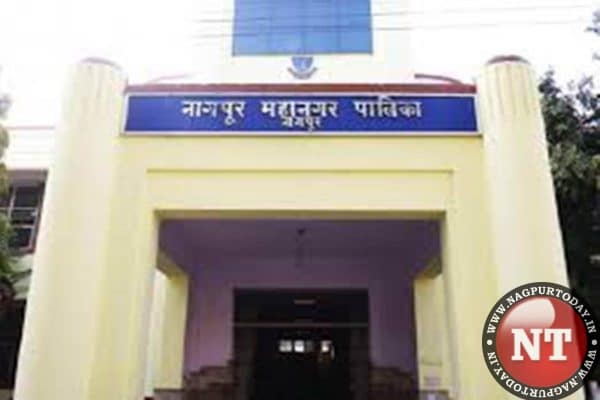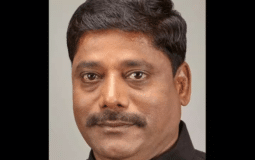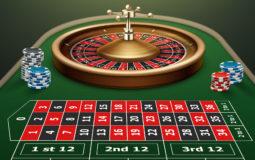
Nagpur: The Nagpur Municipal Corporation (NMC) completed 72 years of its formation on March 2. A pip into the history of NMC would reveal that the 72-year old ‘Child’ is still crawling despite big moves in its strides. The civic body achieved many milestones but many miles to go and of course ‘not to sleep’. Today, Nagpur the Second Capital of Maharashtra is a better place to live albeit a mountain of challenges to face.
History:
Notably, the Municipal Council for Nagpur was established in 1864. At that time, the area under the jurisdiction of the Nagpur Municipal Council was 15.5 sq. km and the population was 82,000. The duties entrusted to the Nagpur Municipal Council were to maintain cleanliness and arrange for street lights and water supply with government assistance. In 1922, the Central Provinces & Berar Municipalities Act was framed for the proper functioning of the Municipal Council.
On January 22, 1950, CP & Berar Act No. 2 was published in the Madhya Pradesh Gazette which is known as the City of Nagpur Corporation Act, 1948 (CNC Act). The Municipal Corporation came into existence in March 1951. The first development plan of the city was prepared in 1953. In the year 1956, under the state reconstitution, the Berar Province merged into the Maharashtra State with Mumbai being recognised as its capital; in 1960, Nagpur was declared as the Second Capital of the State.
As per the CNC Act, 1948, the key responsibility for providing Nagpur’s citizens basic urban services lies with the Nagpur Municipal Corporation. These services include water supply, sewerage, waste management, slum improvement, land use planning, construction and maintenance of internal roads, street lighting, maintenance of parks and gardens, providing primary health and education facilities, etc. NMC coordinates with various other government organizations like NIT, MHADA, MSRTC, the Traffic Police, MPCB, etc. for delivering these basic urban services.
NMC divides the city into 10 zones and which are served by zonal offices:
- Laxmi Nagar
- Dharampeth
- Hanuman Nagar
- Dhantoli
- Nehru Nagar
- Gandhibagh
- Satranjipura
- Lakadganj
- Ashi Nagar
- Mangalwari.
Revenue sources:
The following are the income sources for the Corporation:
- Property tax.
- Profession tax.
- Entertainment tax.
- Grants from Central and State Government like Goods and Services Tax.
- Advertisement tax.
Revenue from non-tax sources:
- Water usage charges.
- Fees from Documentation services.
- Rent received from municipal property.
- Funds from municipal bonds.
Mayors:
The Nagpur Municipal Corporation, in its 72-year history, witnessed 54 Mayors, 56 Deputy Mayors and 50 Municipal Commissioners who tried hard to make Nagpur a better place to live. The work culture in the civic body saw many good changes but still a lot is to be done. Now, in 73rd year, the current set of administrators is gearing up to bring about a change in mindset of the citizens, seeking behaviour change with respect to cleanliness in public places.
After the establishment of NMC on March 2, 1951, G G Desai was appointed initially as an Administrator and later as the first Chief Executive Officer (CEO) on July 1, 1952. During Desai’s tenure (June 1951), the first general election to the civic body was held. Total 42 members were elected from the 42 wards of the city.
Moreover, according to the rules then, one member was nominated to the NMC House by Directors of the Chamber of Commerce of Nagpur, Nagpur University, Nagpur Improvement Trust, Nagpur Janpad Sabha, Central Railway, Eastern Railway and Cotton Mills. Later, on July 1, 1952, six additional members were co-opted by the elected Members.
Finally, with 42 elected, 9 nominated and 6 co-opted members, the House was constituted. On July 20, 1952, Mayor, Deputy Mayor and 10 members of the Standing Committee were elected. Barrister Sheshrao Wankhede was the first Mayor of Nagpur City, while Chhotelal Thakkar was Deputy Mayor and Sadabhau Dandige became first Chairman of the Standing Committee.
About 34 villages were merged with Nagpur Municipal Council which was upgraded to Municipal Corporation. With this the city’s boundary increased to 217.56 sq. km.
Many from Nagpur City rose to great heights and went on to occupy premier positions in the country. The City’s first Mayor Late Barrister Sheshrao Wankhede served as the first Speaker of the Maharashtra Legislative Assembly and he also worked as Finance Minister in the Government of Maharashtra. Along with this, as the 18th President of the Board of Control for Cricket in India, i.e. BCCI, he left an indelible mark of his statesmanship.
After this, many eminent personalities brought limelight to the city. After Wankhede, when Devendra Fadnavis became Chief Minister of Maharashtra, the city of Nagpur was back in news again. Incidentally, Fadnavis also was first to head Mayor-in-Council and youngest Mayor of NMC. Along with Mayors, Municipal Commissioners also played a major role in steering the NMC and they also later rose to eminent positions.
One among them is current Chief Secretary of Maharashtra, Manu Kumar Srivastava. He was Municipal Commissioner at NMC between 2002-2005 wherein he also worked as District Collector. Now, as it transits into one more year, the administrators of NMC realise the burden of hopes and aspirations of Nagpurians.
One of the fastest developing urban centres, the widening boundaries of NMC through inclusion of adjoining villages have put additional strain on the resources. One major worry for the administration is total dependence on the State Government to finance its development projects. Though surrounded by natural resources in abundance, lack of vision so far has put NMC in dependency mode.
In these many years, neither the political leadership nor the administrators at the civic body could develop a dependable drinking water supply source for the city. The biggest problem is generation of resources as the tax net is very low and hence the administration has limited clout to think big. Ever since the withdrawal of Octroi and later LBT, Property Tax has been the sole major revenue generator for NMC.
Here too, the realisation ratio is quite low. Amidst the changing skyline in the city, NMC administrators need to find ways to develop a self-sustaining model and find new revenue sources to boost public finance. But it comes with a rider that citizens are not taxed beyond tolerable limits.
The corporation is headed by a Municipal commissioner, an IAS officer. He wields the executive power of the house. A quinquennial election is held to elect corporators to power. They are responsible for overseeing that their constituencies have the basic civic infrastructure in place and that there is no lacuna on the part of the authorities. The mayor is selected from the party with the largest vote. A largely ceremonial post, he has limited duties.
Various departments such as public relations, library, health, finance, buildings, slums, roads, street lighting, traffic, establishment, gardens, public works, local audit, legal services, waterworks, education, octroi, and fire services manage their specific activities. The activities of NMC are administered by its zonal offices.














